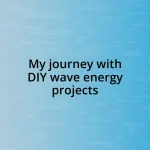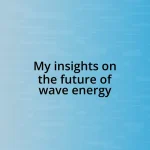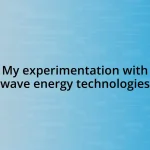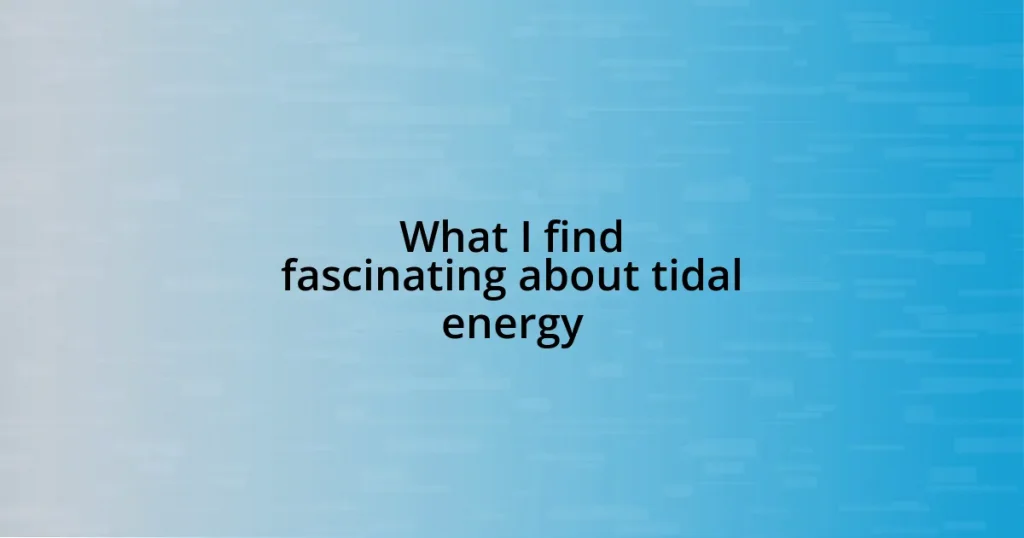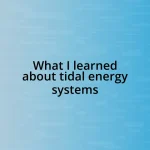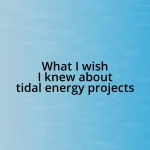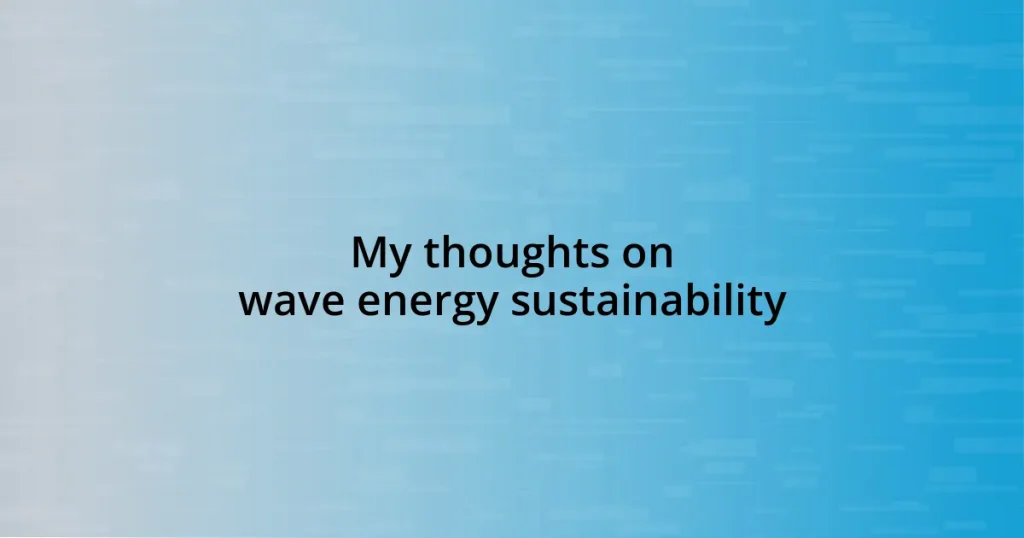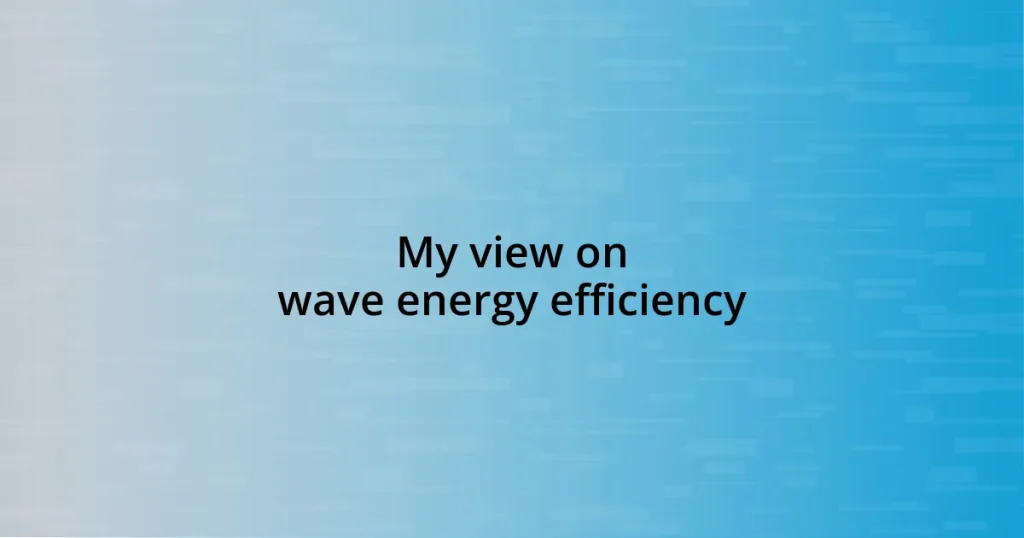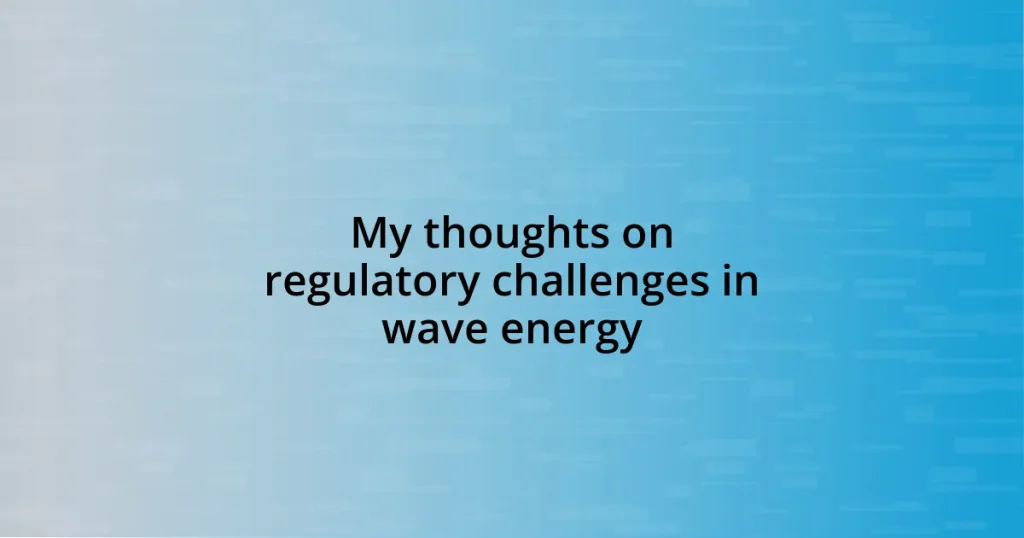Key takeaways:
- Tidal energy offers a reliable and predictable renewable energy source, unlike solar or wind energy.
- Key technologies include tidal turbines, barrages, and dynamic systems that utilize the movement and height differences of tides for energy generation.
- While tidal energy has environmental benefits, it can also disrupt ecosystems, highlighting the need for careful implementation and consideration of ecological impacts.
- Investing in tidal energy can provide economic stability, job creation, and reduce reliance on fossil fuels for coastal communities.
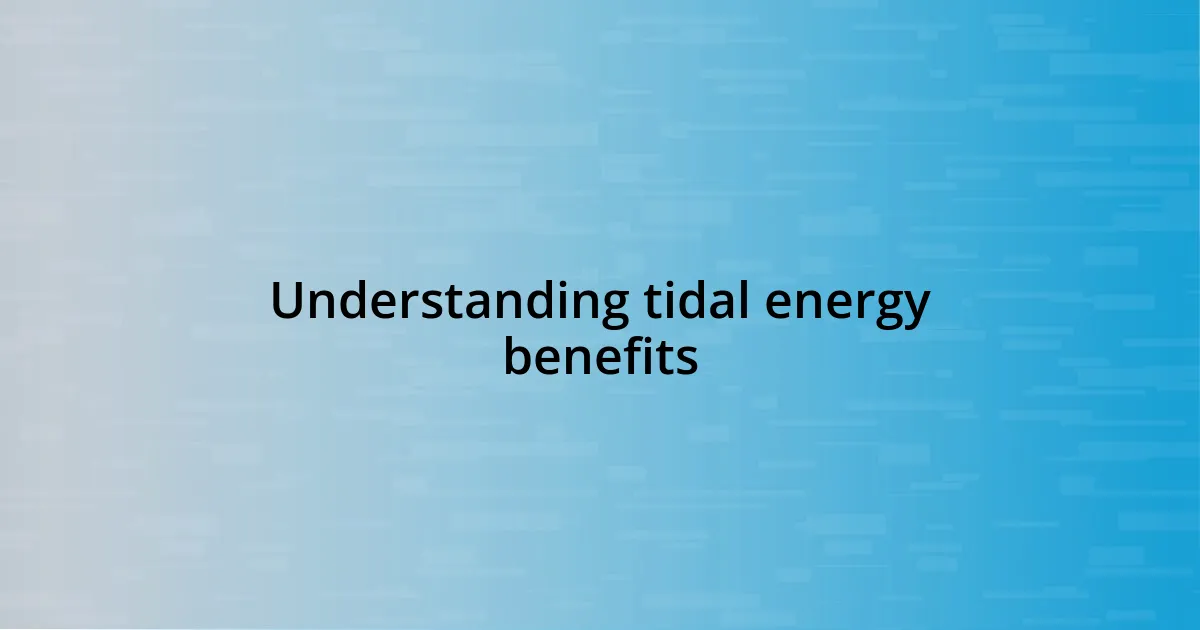
Understanding tidal energy benefits
Tidal energy offers a predictability that seems almost comforting. Unlike solar or wind power, which can fluctuate wildly based on the weather, tidal patterns are consistent, change only with the lunar cycles, and are easier to forecast. I find it fascinating to think about how communities could rely on this renewable source, knowing when to expect energy generation — it’s almost like a natural clock.
One benefit that often strikes me is the environmental impact. Tidal energy systems produce minimal greenhouse gases compared to fossil fuels. I remember volunteering for a local environmental group and discussing how crucial it is to transition to cleaner energy. It made me realize that not only does tidal energy help combat climate change, but it also protects marine ecosystems by using turbines designed to minimize impacts.
This brings me to another compelling aspect: the potential for energy independence. Imagine a world where coastal communities harness the power of their own tides, reducing reliance on imported fuels. When I visit coastal towns, I often wonder how different their economies would be if they could produce their own renewable energy. Wouldn’t it be empowering for those communities to generate electricity right from the ocean waves? It’s a powerful thought that fuels my passion for exploring tidal energy further.
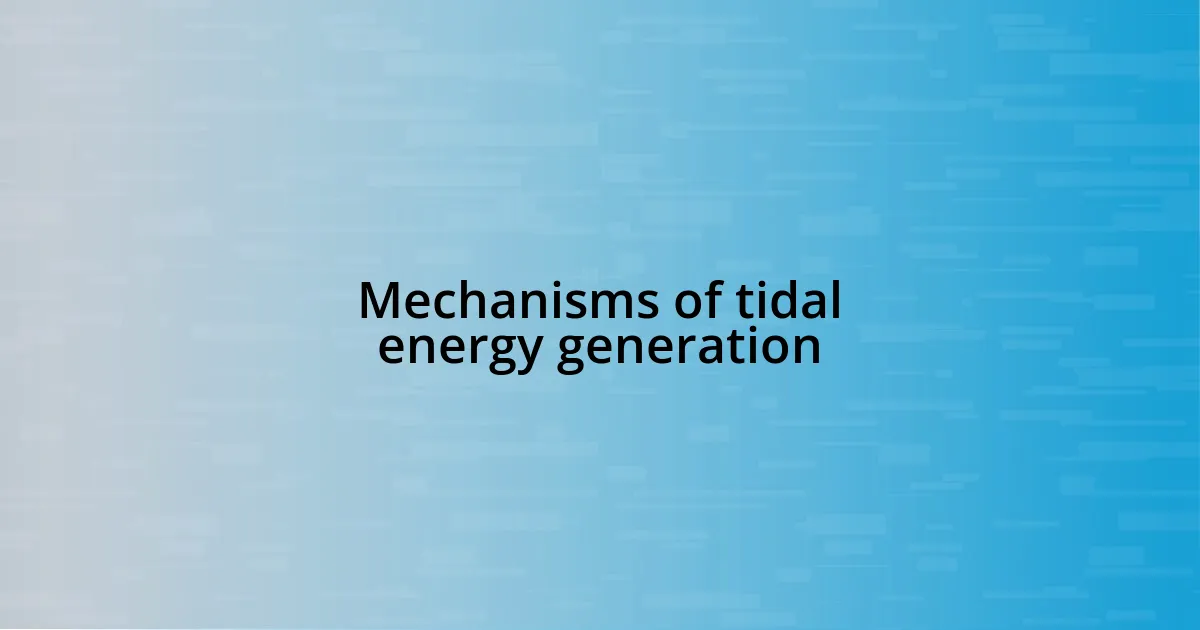
Mechanisms of tidal energy generation
I love delving into the mechanisms behind tidal energy generation and how they mimic the natural rhythms of our oceans. At the heart of tidal energy are two primary methods: tidal stream systems and tidal range systems. With tidal stream systems, energy is harvested from the flow of water moving through turbines, somewhat similar to wind turbines harnessing air currents. On the other hand, tidal range systems utilize the height difference between high and low tides to generate electricity, often employing barrages or dams to create reservoirs.
-
Tidal Stream Energy:
- Uses underwater turbines placed in fast-moving tidal currents.
- Converts kinetic energy from moving water into electrical power.
-
Tidal Range Energy:
- Relies on the gravitational pull of the moon and sun to create differing water levels.
- Generates power through barrages that trap water and release it through turbines.
Reflecting on this, I recall visiting a coastal energy facility where I saw a tidal barrage in action. Watching the water rush in and out, I felt a sense of awe at how harnessing such a powerful, natural force could lead to sustainable energy. It sparked a deep appreciation for the innovative engineering that transforms the movement of water into electricity. It’s a reminder that nature offers us these incredible resources, and it’s up to us to harness them responsibly.
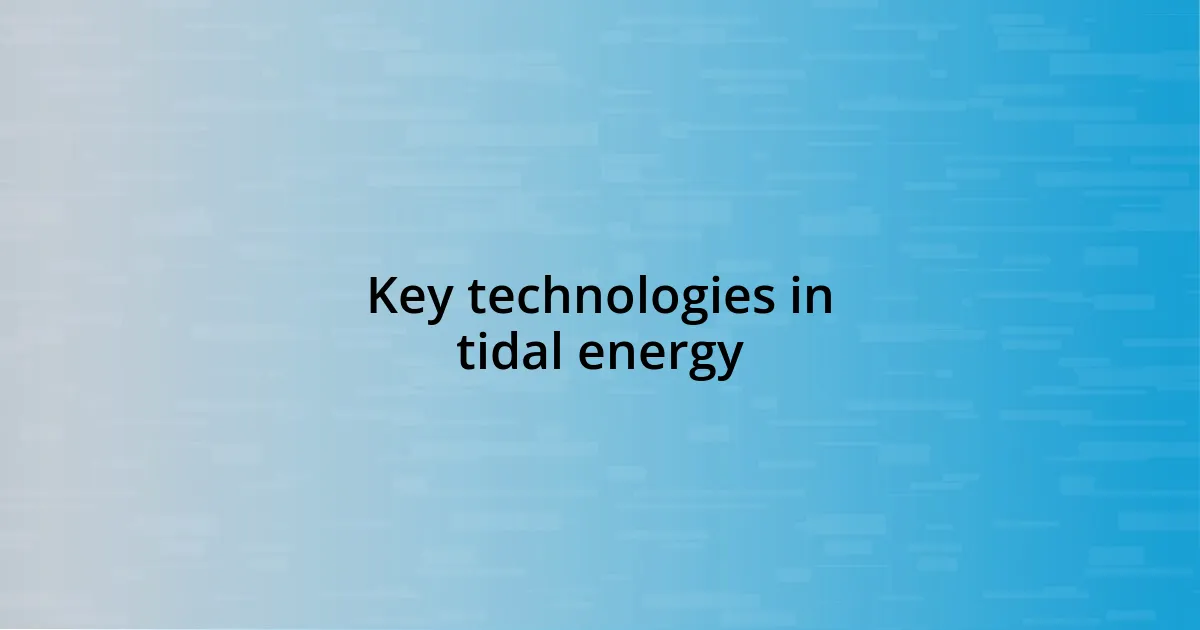
Key technologies in tidal energy
Tidal energy is fascinating, not just for its potential but also for the sophisticated technologies that drive its development. One of the standout technologies is the tidal turbine, which works similarly to an underwater wind turbine, capturing kinetic energy from flowing water. I vividly remember the first time I saw these turbines up close during a field trip; it was astonishing to think that these seemingly simple machines could convert the relentless movements of the ocean into usable power.
Moreover, tidal barrages are another key technology, leveraging the height difference between high and low tides. While visiting a tidal basin on a summer day, I noticed how the ebb and flow created a natural rhythm that made the barrage all the more impressive. It’s like watching the tide perform, and knowing that each high tide corresponds to a potential assessment of energy generation sparked a realization in me: we can harness this natural dance of the ocean for our future energy needs.
Lastly, there’s also the advent of dynamic tidal energy systems, which are quite innovative. These technologies function by capturing energy from both the inflow and outflow of tides. I remember reading about a project where engineers combined kinetic and potential energy concepts, and it struck me how creative problem-solving can shape our energy landscape. This blend of engineering and environmental stewardship is what makes tidal energy so compelling to me; it represents a union of human ingenuity and nature’s forces.
| Technology | Description |
|---|---|
| Tidal Turbines | Utilize underwater turbines to convert the kinetic energy of moving water into electricity. |
| Tidal Barrages | Employ dam-like structures capturing the height difference between tides to generate power. |
| Dynamic Tidal Systems | Harvest energy from both incoming and outgoing tides, maximizing efficiency. |
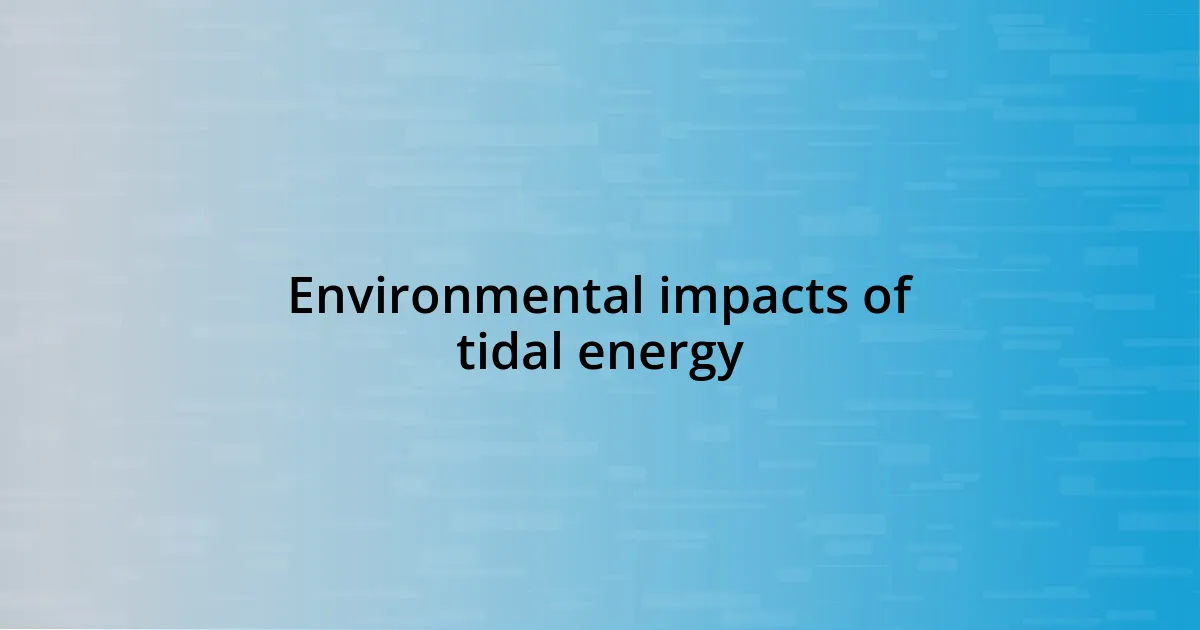
Environmental impacts of tidal energy
When considering the environmental impacts of tidal energy, it becomes clear that both positive and negative aspects exist. For instance, while tidal energy reduces our reliance on fossil fuels, the construction of tidal barrages can disrupt local ecosystems. I once visited a coastal area where a tidal barrage was being proposed, and the local community was divided—some were excited for clean energy, while others worried about how it would alter fish habitats and aquatic life. This kind of conflict illustrates the complexity of balancing renewable energy needs with the preservation of natural environments.
Another intriguing aspect is the potential impact on sediment transport. Tidal installations may change the patterns of sediment movement along coastlines, which can affect shoreline erosion rates. I remember reading about a case study where researchers found that even minor alterations in water flow could lead to significant shifts in sediment deposition, something many of us take for granted. It really made me think—how much are we willing to risk in the name of progress? Understanding these nuances is crucial as we navigate the implementation of tidal energy solutions.
Moreover, I find it fascinating how tidal energy projects could enhance biodiversity over time. For example, the structures themselves can create artificial reefs, providing habitats for various marine species. I once encountered a marine biologist who spoke passionately about how these installations could promote local marine life. It sparked my curiosity—could the very systems we build for energy actually aid in ecological restoration? Exploring these dimensions of tidal energy not only deepens our understanding but also inspires us to find innovative ways to harmonize energy development with environmental stewardship.
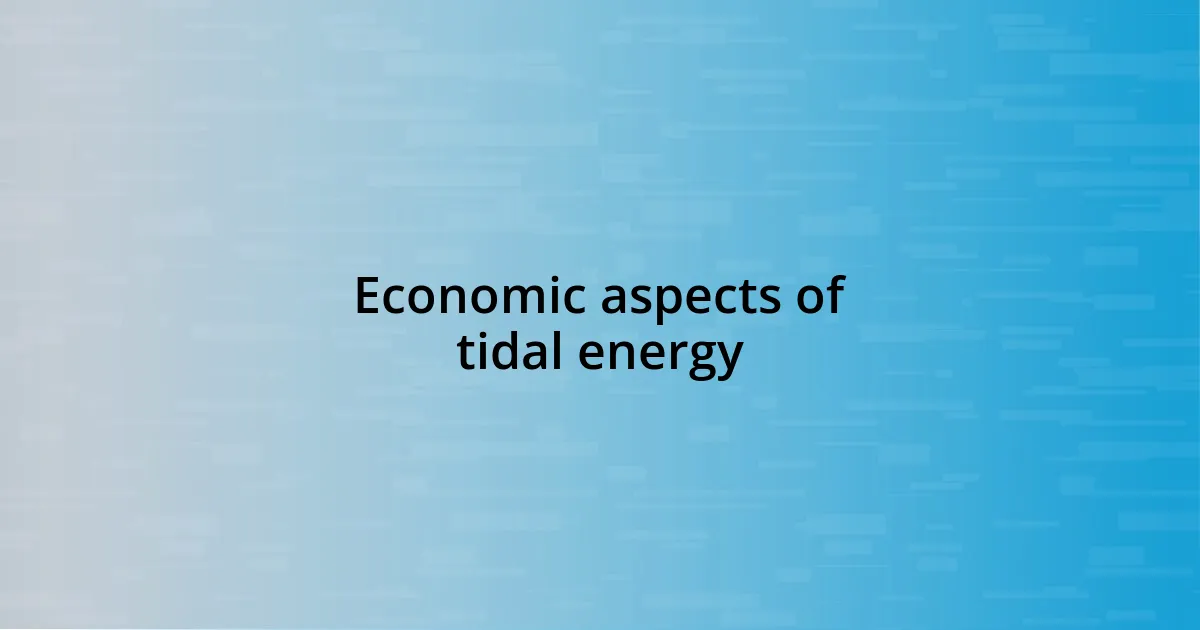
Economic aspects of tidal energy
As I delve into the economic aspects of tidal energy, it’s striking how promising the potential return on investment can be for coastal communities. With the right facilities in place, tidal energy can offer a stable and predictable revenue stream. This stability might explain why I felt such excitement during a visit to a coastal region that just approved a tidal energy project; the locals spoke passionately about how this initiative could transform their economy from reliance on tourism to becoming a hub for renewable energy.
The initial costs associated with constructing tidal energy plants can be quite high, which sometimes gives people pause. However, I’ve learned that the long-term savings on energy costs and the environmental benefits can offset these initial outlays. For instance, while touring a tidal site in development, the project manager described how reducing fossil fuel dependence not only lowers bills but also mitigates volatility in energy prices—a major plus for consumers. Isn’t it fascinating to think that investing in something as natural as tidal energy could bring about economic stability while preserving our planet?
Furthermore, one cannot overlook the job creation aspect of tidal energy projects. During a workshop I attended focused on renewable energy jobs, experts highlighted how the construction, maintenance, and operation of these facilities could provide enduring employment opportunities for local workers. I remember feeling optimistic as I realized that investing in tidal energy not only supports the environment but also bolsters local economies. Isn’t it rewarding to think we can harness the ocean’s power while championing job growth and sustainability?

Future trends in tidal energy
I find it exciting to look ahead and speculate about the future of tidal energy technology. As innovations continue to emerge, we might see more advanced turbines and energy converters designed to capture the flow of tides more efficiently. I remember a conversation with a scientist who was developing a new type of turbine with a smaller ecological footprint. It made me think: could these advancements help us harness tidal energy without compromising the delicate balance of marine ecosystems?
Additionally, there’s potential for integrating tidal energy systems with other renewable sources, like wind and solar. When I attended a recent energy conference, experts discussed the idea of hybrid systems that could optimize energy production. This approach could create a more resilient energy grid, making me wonder how such synergy could revolutionize our dependence on fossil fuels. Wouldn’t it be incredible to see a world where multiple renewable sources work in harmony to power our cities?
Another trend worth noting is increased public awareness and support for tidal energy projects. During a recent community meeting, I witnessed the passion of local residents advocating for renewable energy solutions, showing that grassroots movements are gaining momentum. It struck me that as communities rally together, they can drive positive change in energy policies. So, as interest grows, could we be on the verge of a tidal energy renaissance that reshapes our coastline for generations to come?





